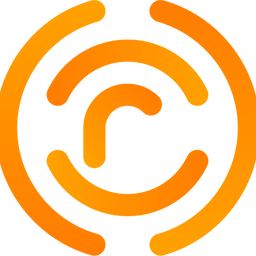The right technology stack is as crucial as selecting your niche, obtaining the right carrier appointments, and hiring ambitious producers for your agency. Rather than considering technology as a final priority, choosing the systems that are best suited for your agency will help you close more business deals and retain more accounts. Whether you are building an agency from scratch or looking to upgrade an existing agency's tools, this article will provide you with the best practices to follow to get the most out of your insurance software.
Tech for Starting a New Agency
Starting a new agency can be both exciting and daunting. As you embark on this journey, it's essential to consider the technology you'll need to support your business operations. While searching for a comprehensive insurance software system that can do everything you need may be tempting, this approach rarely works well in practice.
When starting from scratch, you can build your agency from the ground up without any existing contracts, system lock-ins, or established processes to hold you back. However, this also means you must carefully consider the technology you'll use to run your agency.
One of the most crucial factors to remember when buying technology for your new agency is choosing a system that can support the specific lines of business you intend to write. Think carefully about the policies you'll offer, such as auto, homeowners, or commercial insurance, and ensure the system(s) you buy to support those lines of business.
Choosing a technology platform(s) that aligns with your sales model enables you to manage your operations efficiently and provide your customers with a seamless experience. So, take the time to research your options and find a solution that meets your unique needs as a new agency.

It is important to understand that no single system can handle everything in an insurance agency. Often, the limitations of a new system only become apparent after implementation. Therefore, adopt a hybrid approach. Select the best systems that can integrate for various functions, such as:
- Quoting
- Record keeping
- Renewals
- Claim management
- CRM
- Marketing
- Accounting
When purchasing multiple systems, there are two main priorities to consider. Firstly, do these systems integrate to facilitate data movement between them? Secondly, which system will serve as the central hub?
Companies use Application Program Interfaces (APIs) to move data between insurance software. APIs provide a standard way for data to enter and leave the system. However, not all systems have APIs for every data point, which can limit the availability of certain information to other software. Therefore, choosing the insurance system with the most functionality as the central hub is essential. This will reduce the time spent bouncing between screens and save your team valuable time.
Redefining an Existing Agency Tech Stack
When it comes to technology, many insurance agencies outgrow their tech stack or, due to strategic changes, end up with systems that no longer support the business you write. In many cases, agencies end up with an assortment of different systems that don't communicate with each other, resulting in a great deal of inefficiency and extra work for the team.
While switching from one system to another may seem daunting, it's essential to consider the opportunity cost of not doing so. In other words, what is the price of using multiple incompatible systems? The answer is often higher than most people think.
For example, consider the amount of time and effort that goes into manually transferring data from one system to another. Not only is this time-consuming, but it can also lead to errors and inaccuracies. Additionally, multiple systems mean that your team is spending time learning and mastering different interfaces rather than focusing on their core responsibilities.
Ultimately, the cost of switching to a more streamlined system may seem high at first. Still, when you consider the inefficiencies and extra work that come with using multiple systems, the opportunity cost of not switching is often much higher in the long run.
When considering modernizing an insurance agency's technological infrastructure, agency leaders should examine their existing tech stack. This involves determining their software model, a hub-and-spoke model, one single system, or a constellation of many systems. In this article, we will focus on the hub-and-spoke model, which is the most common in the insurance agency market and the most challenging to switch from.
The Agency Management System (AMS) sits at the center of the traditional hub-and-spoke technology model, with other ancillary software bolted on. When deciding to modernize agency software with this configuration, the most critical factor is whether or not the AMS can adequately connect to other systems. If it can, then it's worth continuing with the current system. However, if it cannot, then it's time to consider switching (even if you can access 50% of the data through APIs, it may not be enough for third-party functionality, and it's still worth evaluating the possibility of switching).
Many agencies have succeeded by transitioning functionality from the AMS and filling the void with best-in-class Customer Relationship Management (CRM), marketing, and accounting software. This effectively transforms the management system into a digital filing cabinet while equipping the team with a modern suite of tools to enhance their productivity.
Your Agency, Your Rules
Technology is vital in making businesses more efficient, productive, and customer-friendly in today's fast-paced world. Understanding that technology should be an additive to your team is imperative. It should not replace human interaction but rather enhance it. The right tech stack can be a force multiplier by making processes faster, providing a better customer experience, and removing obstacles.
Reviewing your technology every year is essential to ensure it still functions well. By doing so, you can identify gaps or areas that may require improvement. If an existing system is no longer performing, it is imperative to reevaluate and find a new technology stack that aligns with your agency's rules.
When choosing a technology stack, it is crucial to consider factors such as cost, usability, and scalability. You should select a technology stack that meets your agency's unique needs and requirements. Your technology should be tailored to your agency, not vice versa.
In conclusion, technology can be a powerful tool for your agency. However, choosing the right technology stack that aligns with your agency's goals, values, and rules is essential. By doing so, you can ensure that your technology is a force multiplier that will help you achieve your goals faster and more efficiently.








